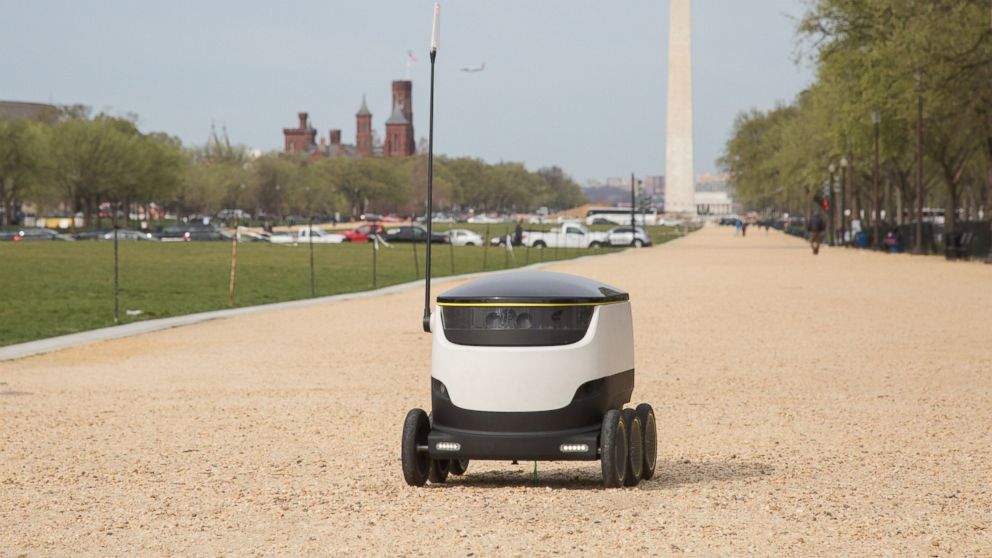Don't Look Up: Robot Deliveries Will Roll, Not Fly Through Washington, DC
With drones banned in D.C., these autonomous deliveries will remain grounded.

— -- “Can you push the crosswalk button for me, please?”
The voice is from a human far away from the intersection at which you are standing. What is in fact standing next to you, emitting the sound, is a 16-inch-tall robot politely asking for help crossing the street.
Meet what could be your next mail, pizza or grocery delivery service.
With a range of up to two or three miles, the robot, developed by Starship Technologies, is designed to service those last mile deliveries.
Henry Harris-Burland, communications manager for Starship Technologies, says the company is testing the devices around the globe, hoping to transform the on-demand delivery industry.
What’s the process of ordering something through Starship? Let’s use pizza as an example:
A customer orders their pizza from a participating store through their personal computer, phone or tablet. When prompted, they will have an option to select “Starship Delivery.”
The robot is either stationed at the store or launched from a nearby hub to fetch the pie.
For security, the recipient is given a pin, which they will be prompted to enter into their app when the robot arrives at their front door. The correctly entered pin will unlock the compartment of the robot holding the customer's hot pizza.
There are some obstacles facing the launch of such a service, but Starship seems ready to hurdle each of them.
For example, crossing a busy intersection could prove very difficult for an automated machine.
In addition to its GPS and computer vision capability, the robot is equipped with nine cameras and two-way audio capabilities. When confronted with any kind of issue or trouble, a human at Starship can take over. The remote operator can have a two-way conversation with those around the robot and also has the ability to use the cameras to see its environment.
The team at Starship has lofty goals for the service.
Over time, the company hopes to work its way up to 99 percent autonomous capability, meaning a remote human operator would only have to intervene about 1 percent of the time.
They hope to make the robots available for 24/7 delivery and for only a $1 fee.
What is it like to come into contact with one of these machines? According to the Starship spokesperson, after 4,000 miles of testing and coming into contact with 400,000 people, 60 to 65 percent of people simply ignore the robot. Most seem unfazed.
Harris-Burland says they have yet to have a single instance of vandalism.
The robot rolls at a human-like pace -- about 4 miles per hour. It sizes up at about 20 inches long and 16 inches tall, can carry 20 to 25 pounds of cargo and runs on about the same amount of energy as a light bulb, according to the spokesperson.
“People don’t want drones above their backyard, above their kids' heads, because if they drop out of the sky, someone is going to get hurt,” Harris-Burland told ABC News.
While Washington, D.C., is a “no drone zone,” lawmakers in the nation’s capital are paving the road for the rolling robots.
The D.C. Council passed the “Personal Delivery Device Act of 2016” on June 22 and approved Starship Technologies to begin testing its product.
Testing in the District of Columbia will begin in September. Residents can expect to see about five of these robots roaming the sidewalks of D.C. when testing begins.
Starship was started by two Skype co-founders.




